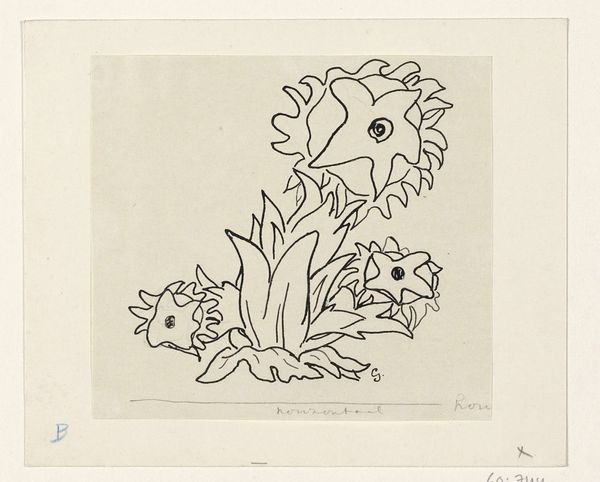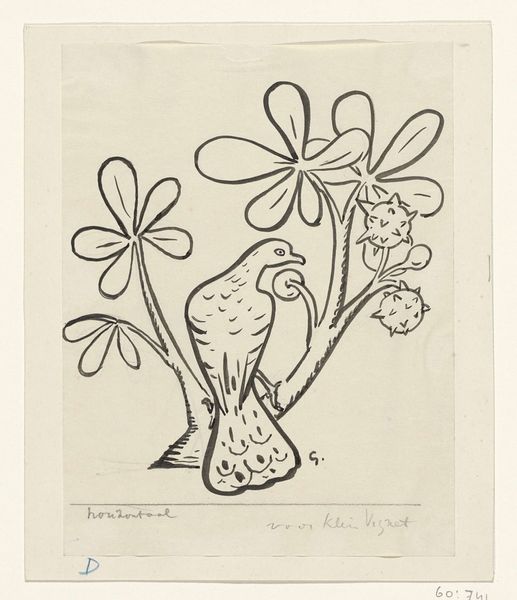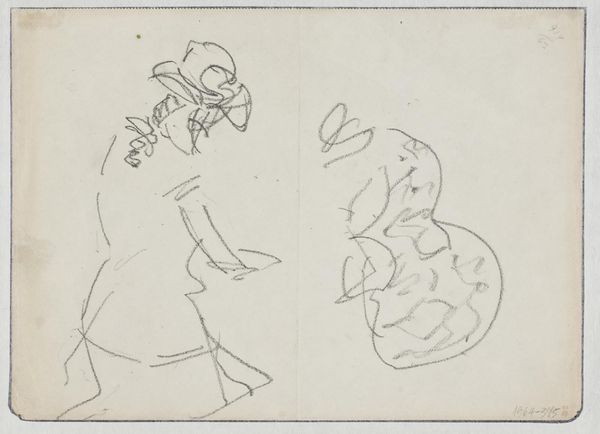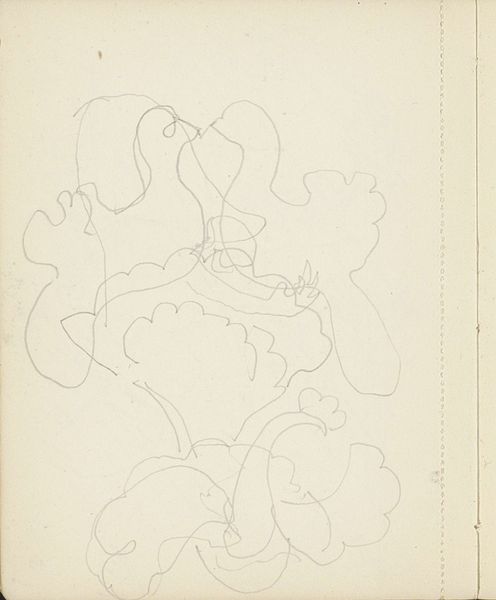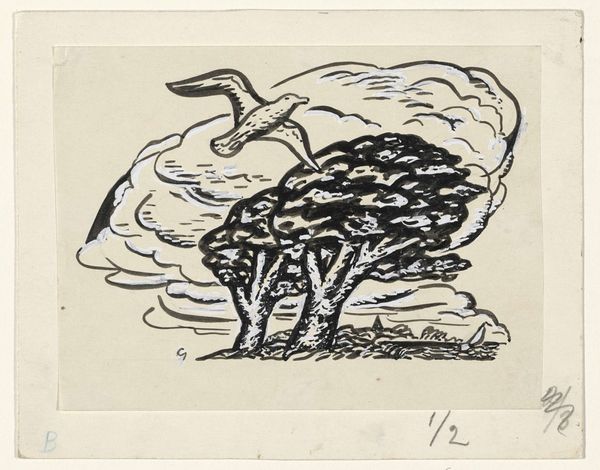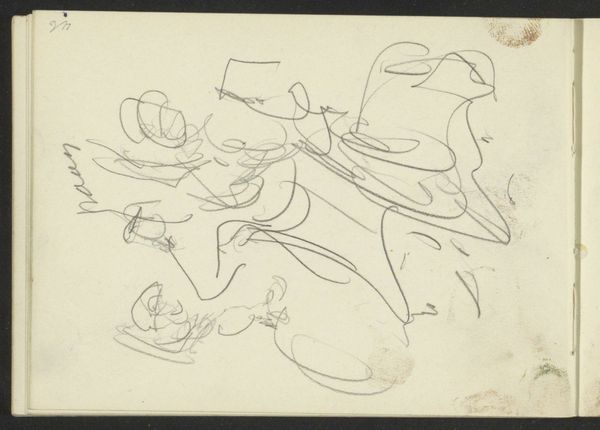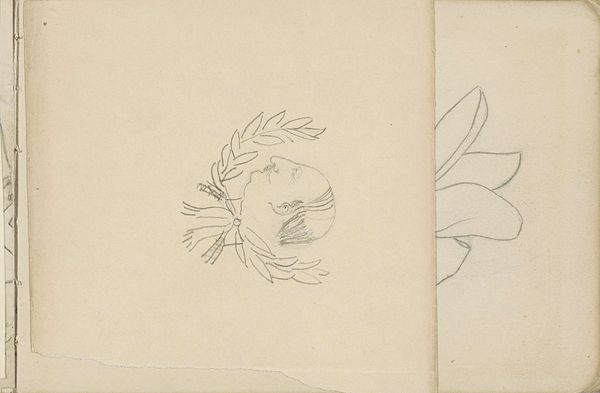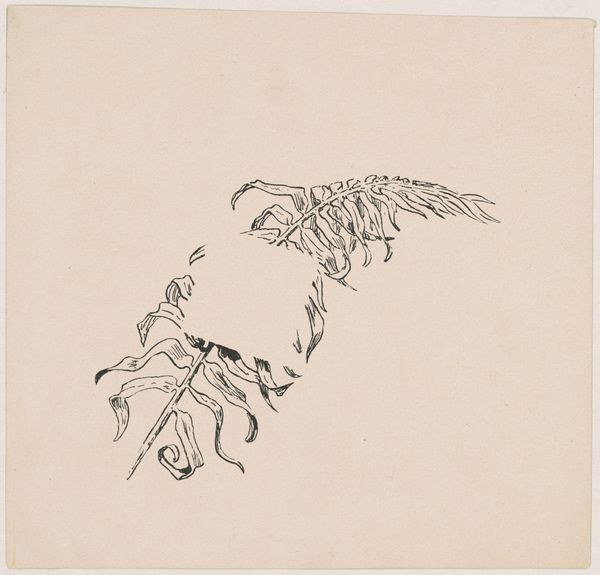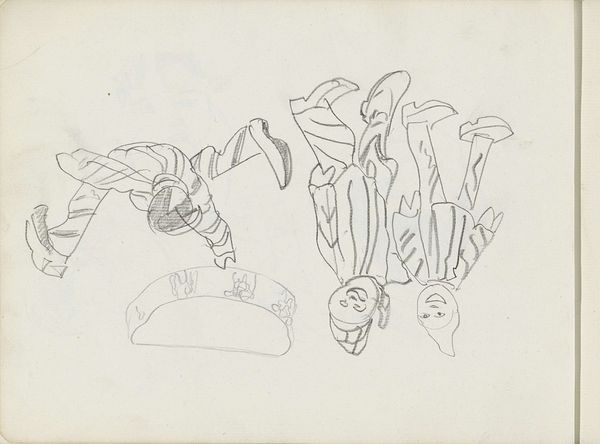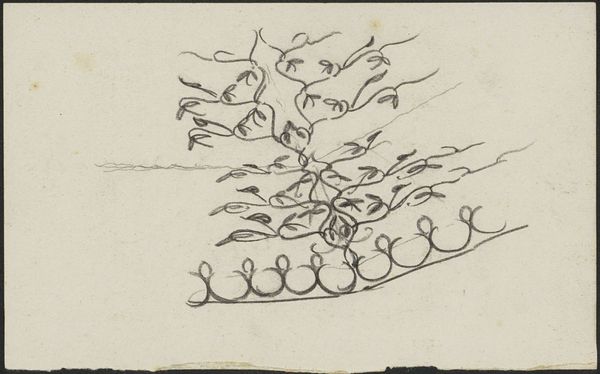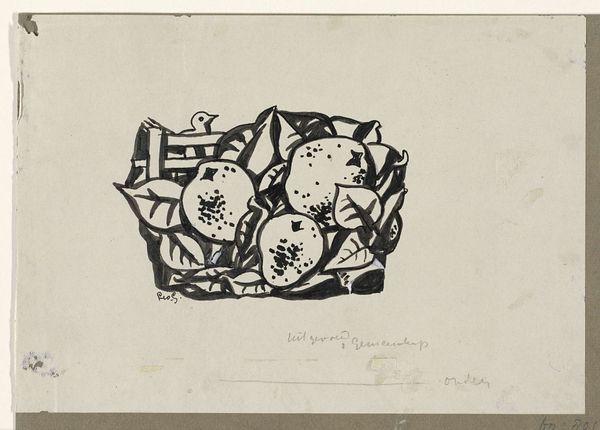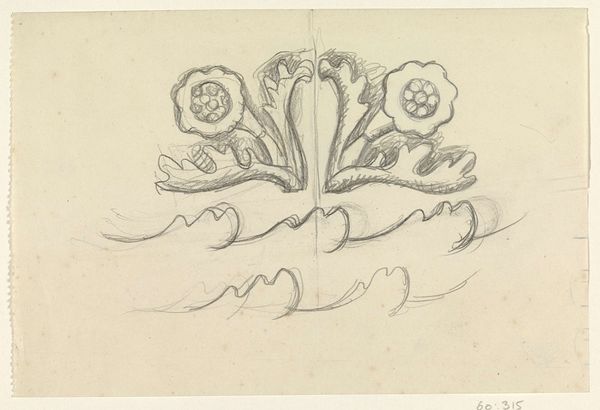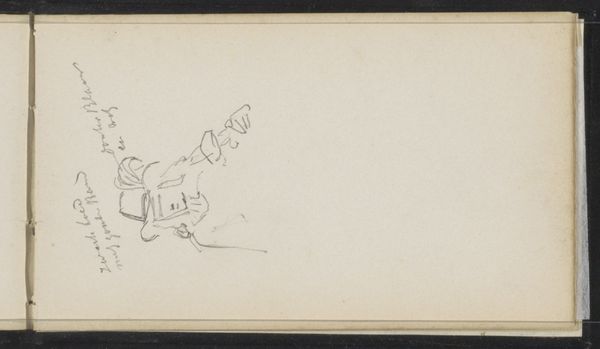
drawing, ink
#
drawing
#
art-nouveau
#
blue ink drawing
#
flower
#
ink
#
abstraction
#
line
Dimensions: height 103 mm, width 124 mm
Copyright: Rijks Museum: Open Domain
Curator: Before us is a drawing crafted in ink, named "Bloem met een libelle" and believed to have been created sometime between 1891 and 1941, courtesy of Leo Gestel. It resides here at the Rijksmuseum. Editor: Ah, it’s got this breezy, carefree feel! Like a doodle you'd find tucked in the corner of a poet's notebook. Simplistic, but also very evocative... it makes me think about fleeting summer days. Curator: Indeed. The stark linearity pushes us towards appreciating its connection to Art Nouveau. The abstraction here can be read as pushing against representational conventions prominent in late 19th-century academic art—arguably an important statement. How do you respond to that positioning? Editor: Mmm... that's an interesting take. To be honest, my mind doesn’t jump to socio-political rebellion, I get something that feels far more childlike and innocent from those unpretentious lines. I feel Gestel is saying something simpler; like observe how magical nature can appear. Curator: Children's drawings were, of course, heavily championed by the avant-garde as honest and raw—untouched by social training. What do you think of the single ink medium here? How does the flower, positioned as the support for the dragonfly, represent perhaps how fragile beauty truly is, even that seemingly simple composition? Editor: Absolutely, it's fascinating how the limitations in one medium can amplify impact; that lone ink feels daring here. Maybe that's because, unlike painting where the layers add robustness, any shaky, wavering line made while etching immediately becomes incredibly palpable. I'd even suggest it reflects the fragility and temporal quality of this tiny intersection—flower and dragonfly—locked in time, forever. Curator: The absence of color contributes to the formal power, but also opens questions around identity, how these are signified without naturalism... Do you get that sense too? The monochrome forces our analysis towards other avenues. Editor: Perhaps... Yet there's an openness in Gestel's lines here—they appear so self-effacing, that one has to question the strength of their 'statement' when approached via art historical interpretation. Regardless, this is a deceptively layered piece, wouldn't you agree? Curator: Very much so. It compels us to examine the historical contexts through which its deceptively basic theme may have played out in broader artistic and cultural movements of the period. Editor: Exactly! You walk away thinking that it must’ve been really nice watching that scene transpire one lovely day.
Comments
No comments
Be the first to comment and join the conversation on the ultimate creative platform.
